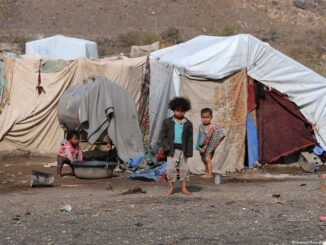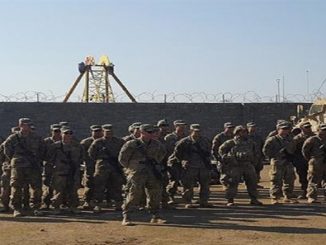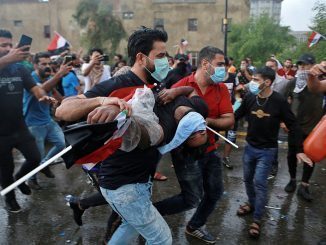
BY: ÇETİNER ÇETİN*
The Anti-DAESH fight has gained a new and critical dimension with the Mosul war. DAESH militants’ determination and resistance to withdrawing from the city reveals the importance of Mosul, which is the capital of fake caliphate of DAESH in Iraq. Previously, the organization abandoned many cities in the region even without clashing. It never remained in a war if it foresaw that it would lose. Despite its initial victories, Mosul-based clashes will last longer than expected.
It was a common view that, unlike previously, DAESH would remain on the defensive instead of attacking. Initially, the organization created fear and panic among civilians through arbitrary mass executions. It seems it pushed city dwellers to city centers to use them as a human shield in a possible urban war.
DAESH continues to manifest itself through counterattacks in unexpected places. In this way, for instance, it blocked the highway between Bagdad and Amman. With the start of the Mosul operation, it unexpectedly activated its sleeper cells in Kirkuk.
Everyone is certain that DAESH will be ultimately removed from Mosul, but when this will take place remains uncertain. Kurdish military experts I interviewed said this will happen in six months at the earliest, while they expect a civilian massacre in the worst case scenario. Motivated by the upcoming presidential elections, US says the removal will happen in two months – which is not realistic at all.
This does not mean DAESH’s end, as some DAESH managers and militants withdrew into Syria. According to Iraqi intelligence reports, 2,300 militants have moved to the Raqqa line in the past three weeks. This will strengthen DAESH there and lead to the prolongation of war. DAESH will keep its resistance in Mosul by using civilians as a human shield with a guerilla technique without having a large crowd of militants.
It will wait under the ground in Iraq to recruit complicated and frustrated Iraqi Sunnis. As it used to be, these Iraqis might join DAESH if Shiite militia tries to revenge on Sunnis while entering Mosul.
Another thing to affect Sunnis’ tendency and acts will relate to the central Shiite government’s attitude toward Sunnis after Mosul’s liberation from DAESH. After the defeat of the common enemy, Mosul might be key to the solution of Iraq’s Sunni question or trigger a new civil war.
The Mosul war has already gained a dangerous dimension because of DAESH’s cruel resistance and Iraq’s ongoing Sunni question. Developments have so far shown that a civil war is a more probable scenario. States aiming to militarily interfere in Iraq or support it as part of anti-DAESH fight must very well interpret the regional equitation. Otherwise, situation in Mosul will go beyond a civil war and ignite another world war.
For Ankara, primary issue is the PKK and DAESH which require it to make a regional intervention and enter Syria and Iraq instead of fighting on its own territory in an attempt to solve the ever growing terrorism. This equitation has become so complicated that it has become a must to interfere without attaching importance to either of them.
But the West and some Middle Eastern countries have a list of priority of terrorist organizations and they act as if they removed the PKK from terror list. Turkey has moved to the field without giving priority to fight any organization and clearly displays its determination.
Iran’s divisive attitude in Iraq and its desire to directly deploy Shiite militia to the field fuels an unavoidable civil war in the country. Iran’s direct support to al-Hashd al-Shaabi can be defined as a policy of pitting brothers against each other in Iraq. Iran is the force behind sectarian clashes, tension between KYP, PUK and Goran, internal rifts between Sunni groups and the conflict between Shiite and Sunni Turkmens. Its relation with the PKK has always been worrisome.
Some important local factors having part in the Mosul war should not be ignored. The years-long conflict between Arab and Kurdish tribes, and between Sunni and Shiite Turkmens in Tal Afar will go in DAESH’S favor at a time when these two constituents are in southern and western Mosul which spans from the Jazirah desert to Syria. We cannot deny the fact that this conflict might further escalate even if DAESH is removed from the city.
Al-Shura and Hammam al-Alil districts in southern Mosul, where tribes are living, were the bastions of armed group against US forces during the invasion of Iraq. These districts constituted the clearest core of al Qaida during al-Zarqawi’s leadership. There are tribes spreading the Syrian border like Al Mutavete, al-Jahish and Shammar, the territories of which witnessed clashes with armed Kurdish forces over the past decade.
As a result, many villagers migrated in the region. Clashes have continued since Iraqi Kurdistan seized many controversial regions with Bagdad’s fall in 2003. This does not hide the fact that there are some of these tribes allying with Kurdish forces in the Rabia city on the Iraq-Syria border.
There is a desert spanning from Rabia and al Baac which functioned as a shield first for al Qaida and then DAESH. David Petraeus, an experienced American military official in Iraq, recently defined the region as key in military operations, as it spans to organization regions in Deir ez-Zor and Raqqa.
The line connecting Mosul to Raqqa via Jazirah is a crucial area for DAESH and far from Kurdish regions in the north and Shiite regions in Iraq.
Another factor creating regional tension is Sunni Turkmens in Tal Afar which benefit DAESH around Mosul. Sunni Turkmens settle in the beginning of the way that spans from Mosul to Syria and the north of the desert. They experience bloody clashes with Shiite Turkmens, leading to the death of hundreds of people since 2003. Some Sunni Turkmens tend toward al Qaida and DAESH because of authority gap in the region, so much so that they have become major managers of these organizations, like Abu Muslim al-Turkmani and Abu Ala al-Afri. There are also military managers apart from Sunni Turkmens. Meanwhile, Shiite Turkmens have joined government forces as part of al-Hashd al-Shiite. They were last seen in the Kirkuk war several days ago.
If Turkey remains out of the Mosul talks, this will push Turkmens, who the internal balances have compelled to marginalization since 2003, to radicalization. So, they might face a great massacre after a while. Turkey must be the most important player in normalizing these Turkmen groups. Clashes between Arab tribes and Kurds, and between Sunni and Shiite Turkmens, can give an impetus to DAESH, enabling it to prolong the war at a time when these parties are battling in southern and western Mosul.
Iranian corridor might pit Tehran against Ankara
It is a fact that Shiite militia’s move toward the Turkmen city of Tal Afar has a strategic target which goes beyond current Iraqi administrators. It extends into Iran which attaches importance to ensuring a free corridor into Syria via Iraq by supporting sectarian groups.
Iran’s target goes beyond ensuring this corridor. Considering a possible clash on exporting gas to
Europe, the largest global market, it aims to have a passage leading to the Mediterranean via Syrian coasts.
Tal Afar is crucial for Iran for its geographical position which makes the city a center of material and human facilities going from Iran to Syria. It is more assured place than other places due to its demographic structure.
Shiite Turkmens constitute most of Tal Afar’s population. Politicians in the region say the militia’s goal of seizing this region does not concern preventing DAESH from escaping to Syria.
After al-Hashd al-Shaabi’s militia was prevented from approaching the Mosul border, Iran is left with no other choice than avoiding to block the way that leads to Syria. This is possible with adding Tal Afar to the efforts of reclaiming Mosul. Iran’s main aim is to isolate Tal Afar from the military operations in Mosul and give it to the monopoly of militia.
Unlike Turkey, Iran does not need a direct military intervention to have control of many regions in Iraq as it uses its Shiite militia to this end.
Jawad al-Talabawi, the spokesman of Asa’ib Ahl al-Haq which is one of the leading al-Hashd al-Shaabi groups, said, “Al-Hashd al-Shaabi officially assigned us to liberate Tal Afar. Al-Hashd al-Shaabi’s task is to prevent DAESH elements from escaping toward Syria and completely isolate Mosul from Syria.”
Reportedly, some al-Hashd al-Shaabi groups are preparing to deploy in a region which is just several kilometers from Turkish positions in Bashiqa. This information indicates that these groups will deploy in a position which is within Turkish force’s shooting range. Likewise, Turkish forces will be within their shooting range.
It is a rising possibility that a clash might break out between Turkey and Iran in this region. This possibility must not be ignored while there is cooperation between al-Hashd al-Shaabi management and the PKK, the fighters of which are deployed around eastern Sinjar.
*Çetiner Çetin is a Turkish journalist. He wrote this article exclusively for the Middle East Observer on Sunday, Oct. 30, 2016.



